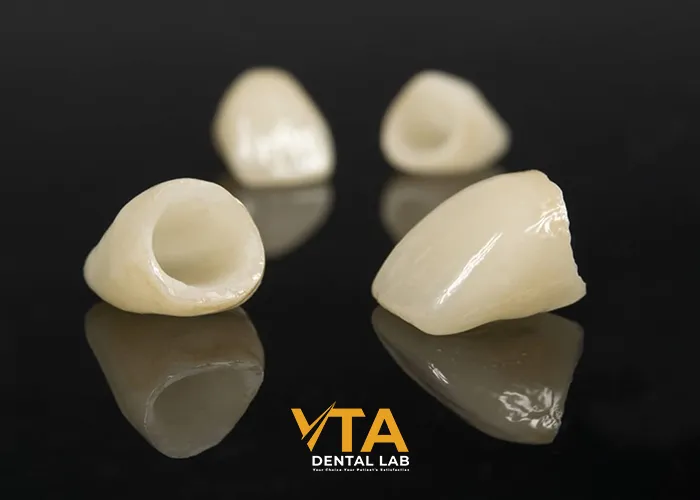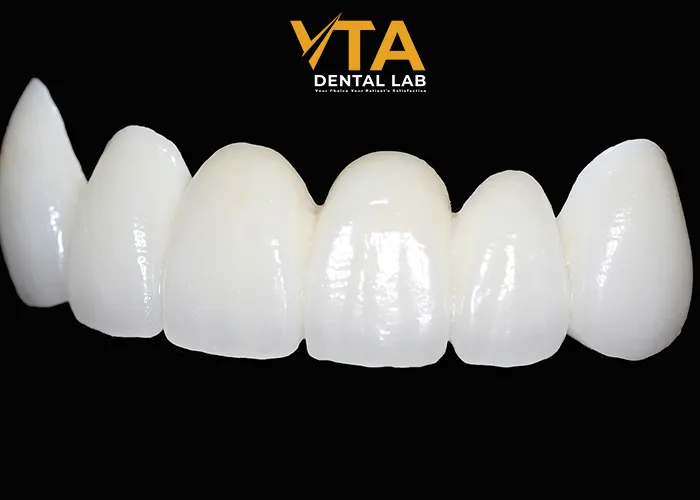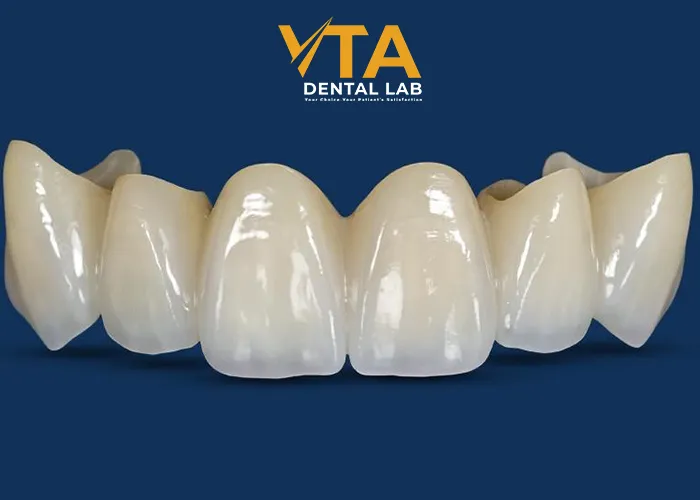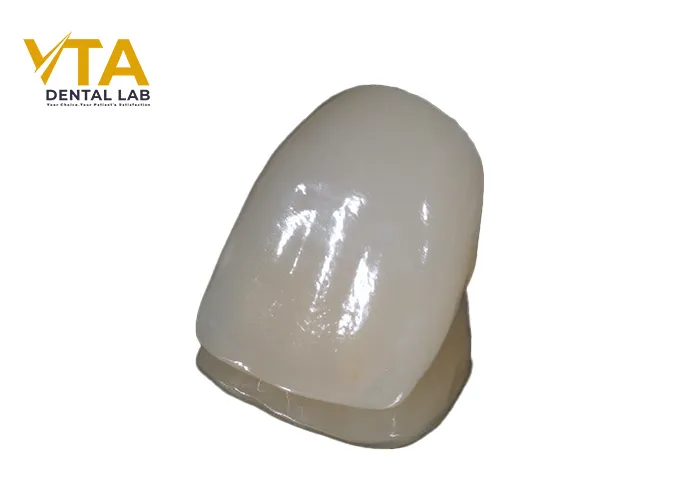Anterior Crowns: Ultimate Instructive For Dentists

Indications for Using Anterior Crowns
Anterior Crowns can provide excellent functional restoration and aesthetic enhancement for patients. There are 12 anterior teeth, including 4 incisors and 2 canines in the upper, and 4 incisors and 2 canines in the lower. These teeth are essential in achieving a perfect appearance and confidence, so the anterior region requires maximum aesthetics and function in the oral cavity.
Anterior Crowns can be recommended for several reasons, such as:
- Restoring teeth damaged by decay, injury, or wear and tear.
- Covering a dental implant or holding a dental bridge in place.
- Reinforcing weakened teeth due to fillings or root canal treatment.
- Improving the appearance of teeth that are misaligned, chipped, have gaps, or have other aesthetic imperfections like stains or color changes.

Choosing the Right Material for Anterior Crowns
We all know that several important factors need to be considered when choosing a material for Anterior Crowns, including aesthetics, durability, and material properties. Lithium disilicate and Zirconia appear to be the most popular materials used for single-unit anterior crowns due to their superior aesthetics and better fit compared to conventional Porcelain crowns.
These materials can be crafted to perfectly match the natural color of your teeth as they mimic the translucency of enamel in a virtually indistinguishable way. They provide the necessary mechanical properties as well as the full optical characteristics required for this type of restoration.
The choice of material significantly impacts shade matching. In recent years, some dental laboratories have introduced the option of Multi-layered zirconia for Anterior Crowns due to its high durability, easier processing, and lower cost compared to Lithium disilicate. However, for cases requiring absolute aesthetics, Lithium disilicate is the better choice. This material allows more light to pass through, enabling it to closely mimic the color and translucency of natural teeth.
Step Workflow for Anterior Crowns
Initial Consultation, Examination, and Tooth Preparation
Just like all other dental restoration methods, the process of making anterior crowns begins with an initial examination and consultation. It is important to accurately determine the goals to be achieved and whether a crown or veneer is the better option for the patient. After assessing the oral condition and discussing treatment options with the patient, the dentist will proceed to prepare the tooth by removing a portion of the enamel to create space for the crown, ensuring that the crown will fit snugly in the mouth.

Impression or Digital Scanning
The dentist will take an impression using either the traditional impression method or a digital scanning technique to create either a physical or digital impression to send to our laboratory. A temporary dental crown is typically made by the dentist right in the dental office to be placed on the patient’s tooth while waiting for the permanent crown.
Crown Fabrication
We will use the impression provided by the dentist to create the Anterior Crowns. This process may take 1-2 weeks and includes design, fabrication, and testing. As mentioned above, the Anterior Crowns require high aesthetics and optimal function, so we always pay close attention to designing the shape, color, translucency, and functionality of the crown to make it match the surrounding natural teeth as closely as possible.
The step of checking the bite alignment is also a crucial task that we pay special attention to, as any misalignment in the bite can render all previous efforts meaningless.

Final Anterior Crowns are Fitted
The completed dental crown will be sent to the dentist, who will then remove the temporary crown, clean the tooth, and place the permanent crown onto the patient’s tooth. During this process, the dentist will also check the fit, bite, and aesthetics to ensure that once the permanent crown is permanently cemented, no further adjustments will be needed.
Finally, the dentist will provide instructions on how to care for the crown and schedule a follow-up appointment to monitor the condition and make any necessary adjustments.
Summary
According to statistics from the National Center for Health Statistics (NCHS), there are over 2.3 million people in the U.S. who use dental crowns each year. This figure is truly remarkable, isn’t it? The large number of people needing crowns has led to rapid advancements in dental technology, bringing us to an era where you can choose from a variety of high-quality crown materials, including porcelain, gold, metal, and zirconia. Regardless of the material you choose, each has its advantages for restoring function.
Anterior Crowns can be made from materials such as Zirconia, Lithium disilicate, or any other material suitable for each patient’s needs and oral health. Not only does the choice of material affect the quality and longevity of the crown, but selecting a laboratory with experience and high craftsmanship is equally important.
Do you remember the last time you had to send front crown cases back to the laboratory for remakes? Was it a long time ago or just yesterday? At VTA, we have an optimized process to minimize the need for remakes of your Anterior Crowns. Contact us today and let VTA become your strategic partner for long-term growth in the dental industry.